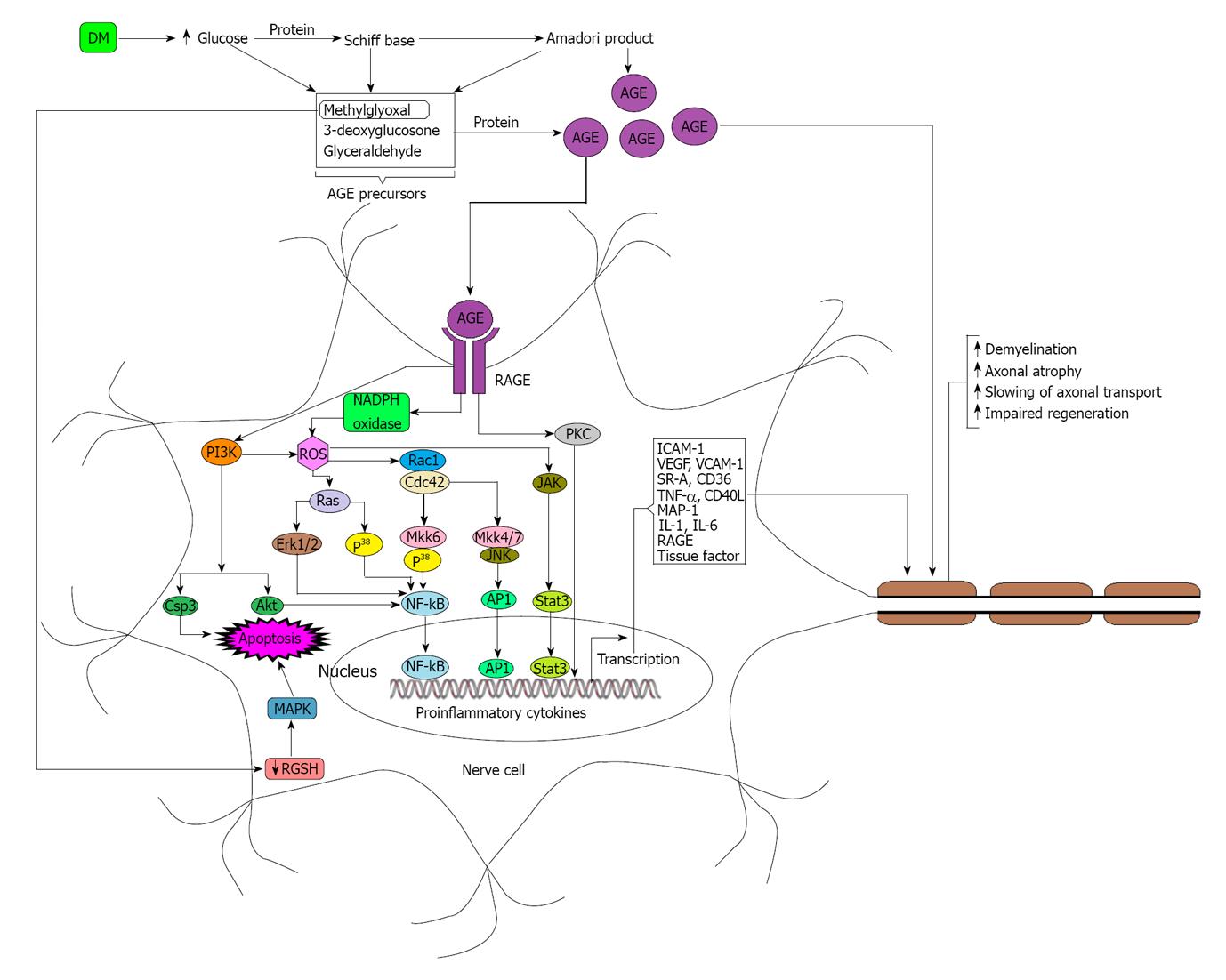Copyright
©2013 Baishideng Publishing Group Co.
World J Diabetes. Aug 15, 2013; 4(4): 101-113
Published online Aug 15, 2013. doi: 10.4239/wjd.v4.i4.101
Published online Aug 15, 2013. doi: 10.4239/wjd.v4.i4.101
Figure 2 Diabetes mellitus induced Peripheral nerve damage.
During hyperglycemic condition concentrations of methylglyoxal, 3-deoxyglucosone and glyceraldehyde increase rapidly due to the increased breakdown of glucose. Elevated levels of methylglyoxal, 3-deoxyglucosone and glyceraldehyde lead to the formation of advance advance glycation end products (AGEs) which in turn modify nerve cell components as well as signal through the receptor for advance glycation end product (RAGE) expressed on the nerve cells in order to produce different types of cytokines which may have roles on nerve damage. RAGE induced nicotinamide adenine diphosphate hydrogen (NADPH) oxidase is the major source of reactive oxygen species (ROS) and ROS plays a crucial role to activate nuclear factor kappa B (NF-κB) through Ras-Erk, Rac1-Mkk6 depended pathway. ROS also activates AP-1 and Stat-3 through Rac1-Mkk4/7, JAK-Stat mediated pathway respectively. RAGE may induce apoptosis through PI3K-Csp3 depended pathway as well as activates NF-κB through PI3-Akt mediated pathway although PI3K may participates in ROS production. Diabetes mellitus (DM) induced methylglyoxal may directly participates in apoptosis through MAPK mediated pathway. Activated NF-κB, AP-1 and Stat3 act congruously to transcribe the genes of proinflammatory cytokines and other factors which are responsible for the destruction of peripheral nerve cells. AGE also participate directly on the modification of axon and thereby reduce the potentiality of signal transduction. DM: Diabetes mellitus; AGE: Advance glycation end product; JAK: Janus kinase; RAGE: Receptor advance glycation end product; ROS: Reactive oxygen species.
- Citation: Roy B. Biomolecular basis of the role of diabetes mellitus in osteoporosis and bone fractures. World J Diabetes 2013; 4(4): 101-113
- URL: https://www.wjgnet.com/1948-9358/full/v4/i4/101.htm
- DOI: https://dx.doi.org/10.4239/wjd.v4.i4.101









